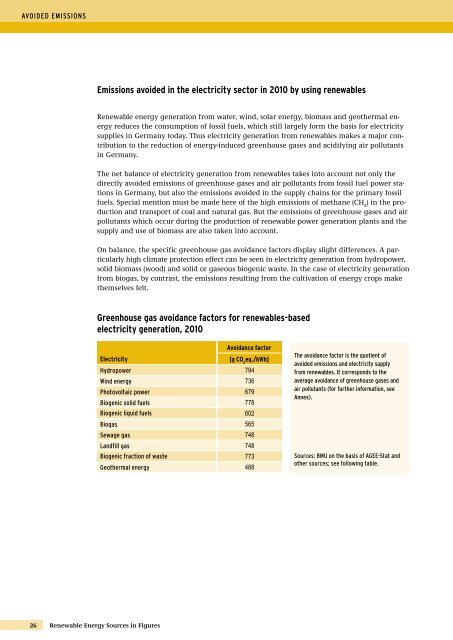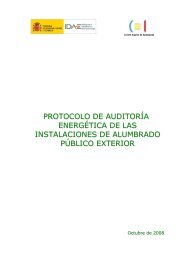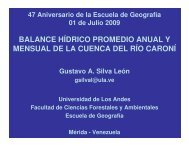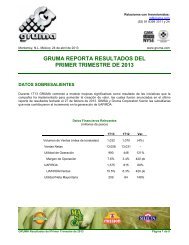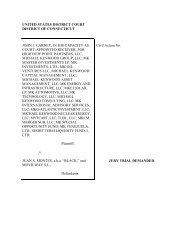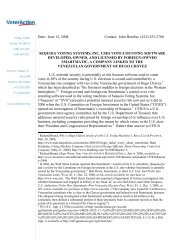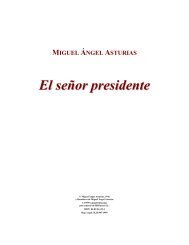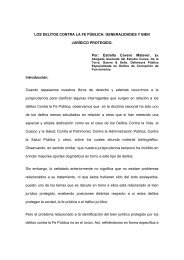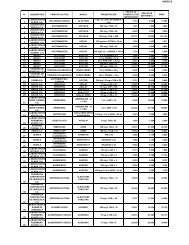broschuere ee zahlen en bf
broschuere ee zahlen en bf
broschuere ee zahlen en bf
Create successful ePaper yourself
Turn your PDF publications into a flip-book with our unique Google optimized e-Paper software.
aVOIDeD eMIssIONs<br />
26 R<strong>en</strong>ewable Energy Sources in Figures<br />
Emissions avoided in the electricity sector in 2010 by using r<strong>en</strong>ewables<br />
R<strong>en</strong>ewable <strong>en</strong>ergy g<strong>en</strong>eration from water, wind, solar <strong>en</strong>ergy, biomass and geothermal <strong>en</strong>ergy<br />
reduces the consumption of fossil fuels, which still largely form the basis for electricity<br />
supplies in Germany today. Thus electricity g<strong>en</strong>eration from r<strong>en</strong>ewables makes a major contribution<br />
to the reduction of <strong>en</strong>ergy-induced gr<strong>ee</strong>nhouse gases and acidifying air pollutants<br />
in Germany.<br />
The net balance of electricity g<strong>en</strong>eration from r<strong>en</strong>ewables takes into account not only the<br />
directly avoided emissions of gr<strong>ee</strong>nhouse gases and air pollutants from fossil fuel power stations<br />
in Germany, but also the emissions avoided in the supply chains for the primary fossil<br />
fuels. Special m<strong>en</strong>tion must be made here of the high emissions of methane (CH 4 ) in the production<br />
and transport of coal and natural gas. But the emissions of gr<strong>ee</strong>nhouse gases and air<br />
pollutants which occur during the production of r<strong>en</strong>ewable power g<strong>en</strong>eration plants and the<br />
supply and use of biomass are also tak<strong>en</strong> into account.<br />
On balance, the specific gr<strong>ee</strong>nhouse gas avoidance factors display slight differ<strong>en</strong>ces. A particularly<br />
high climate protection effect can be s<strong>ee</strong>n in electricity g<strong>en</strong>eration from hydropower,<br />
solid biomass (wood) and solid or gaseous biog<strong>en</strong>ic waste. In the case of electricity g<strong>en</strong>eration<br />
from biogas, by contrast, the emissions resulting from the cultivation of <strong>en</strong>ergy crops make<br />
themselves felt.<br />
Gr<strong>ee</strong>nhouse gas avoidance factors for r<strong>en</strong>ewables-based<br />
electricity g<strong>en</strong>eration, 2010<br />
Electricity<br />
Avoidance factor<br />
[g CO eq./kWh]<br />
2<br />
Hydropower 794<br />
Wind <strong>en</strong>ergy 736<br />
photovoltaic power 679<br />
Biog<strong>en</strong>ic solid fuels 778<br />
Biog<strong>en</strong>ic liquid fuels 602<br />
Biogas 565<br />
sewage gas 748<br />
landfill gas 748<br />
Biog<strong>en</strong>ic fraction of waste 773<br />
Geothermal <strong>en</strong>ergy 488<br />
the avoidance factor is the quoti<strong>en</strong>t of<br />
avoided emissions and electricity supply<br />
from r<strong>en</strong>ewables. It corresponds to the<br />
average avoidance of gr<strong>ee</strong>nhouse gases and<br />
air pollutants (for further information, s<strong>ee</strong><br />
annex).<br />
sources: BMu on the basis of aG<strong>ee</strong>-stat and<br />
other sources; s<strong>ee</strong> following table.


